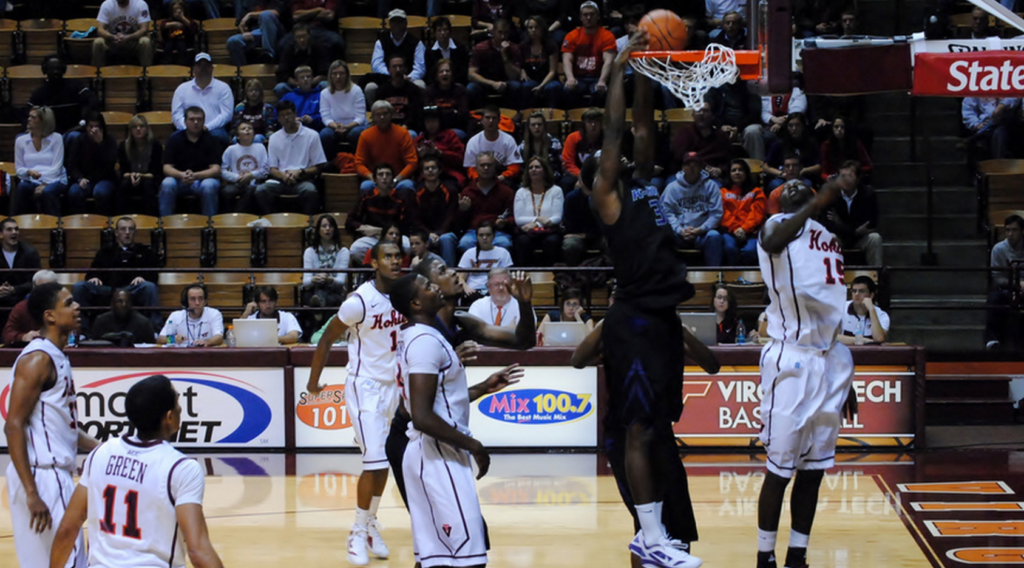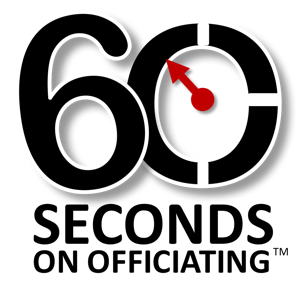
Photo courtesy of Garry Thompson.
Grasping the Ring
Whether on offense or defense, the rules are the same. How do you handle these situations?
Nothing will bring a coach or a group of spectators to their feet faster than an opposing player grabbing a fistful of the rim during a hotly contested play.
“Grasping the Ring” is the correct technical term, and a Technical Foul is sometimes (but not always) charged to the offending player for this action.
The sight and sound of the ring being pulled down and snapped back into position during a live ball will no doubt get your attention, and that of everyone in the gym, so let’s take sixty seconds to review a few scenarios that will allow you to confidently and competently make the correct ruling on if a whistle is needed rule on basket interference and/or issue a technical foul.
Whether the player doing the grasping is on offense or defense, the basis for the rulings are the same. But for this scenario the perpetrator is on the team with the ball:
A-2 leaps in the air to follow up A-1’s missed shot. A-2 mis-times his leap for a put-back dunk and grasps the ring. A-2 momentarily hangs on the basket before releasing his grip and returning to the floor.
Now you need to quickly locate the ball and review the play in your mind to determine if the ball is:
- Outside the Cylinder
- Inside the Cylinder
- On or In the Basket
OUTSIDE the cylinder —
No whistle is needed. Let the play continue.
INSIDE the cylinder —
No whistle needed. Let the play continue. However, if the player causes the movable ring to collapse and when it snaps back and makes contact with the ball, blow your whistle and rule basket interference.
ON or IN the BASKET — Blow your whistle and rule basket interference.
The merits for charging A-2 with a Technical Foul for hanging on the basket are a separate issue and can be answered with one question:
Was it done to prevent injury?
The suggestion here is to err on the side of caution and not be too hasty in hitting A-2 with a “T.”
Consider A-2’s ability to safely return to the floor without causing injury to himself (his legs swinging outward) or any player around him (landing on top of another player).
A “chin-up” or “pull-up” by A-2 or a fancy “dismount” will likely draw a cheer from the crowd and give you an extra split-second to mentally review the play and charge A-2 with a technical foul if warranted.
“It’s better to be late and right, than early and wrong.”
And like the Superior Court judge who stated, “I can’t describe it, but I know it when I see it,” when asked the difference between nude photos and pornography; so too is it with players hanging on the basket. When you see it, you will know which one’s warrant a Technical Foul.
So, filter out the chaos of the coaches and the crowd and the snapping sound of the bending basket to identify the location of the ball at the time of the incident. Make your decision to blow or not blow your whistle based on this information.
Assess if the hanging on the basket warrants a Technical Foul. If in your judgment it is obvious the player was in control of his body and his actions were for show and not safety and it must be penalized, then blow your whistle. If you’re not 100% sure, hold your whistle.
If you follow these tips you will no doubt grab the brass ring on plays involving grasping the ring.
Reference NFHS Rules: 4-6-1-4; 10-3-3
